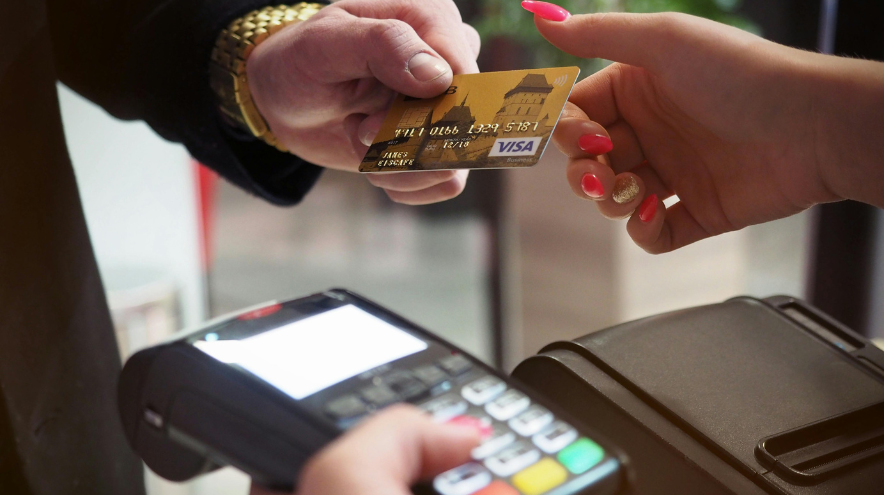Accepting Crypto Payments: A Practical Guide

In our rapidly evolving digital economy, the acceptance of cryptocurrency payments has become increasingly mainstream. With the rise of popular cryptocurrencies such as Bitcoin and Ethereum, businesses have recognized the need to adapt to the changing landscape of payment methods. Accepting crypto payments not only expands customer reach but also offers a secure and efficient way to transact online.
This practical guide explores the benefits and challenges of incorporating cryptocurrency payments into your business. From selecting the right payment processor to navigating regulatory concerns, this comprehensive resource will provide you with the necessary information to seamlessly integrate crypto payments into your operation. Embrace the future of finance by considering the advantages of accepting cryptocurrency as a form of payment.
What is cryptocurrency?
Cryptocurrency is a digital or virtual currency that uses cryptography for security. It operates independently of a central bank and is decentralized, meaning that it is not controlled by any government or financial institution. The most well-known cryptocurrency is Bitcoin, but there are also many other types, known as altcoins. Cryptocurrencies are based on blockchain technology, a decentralized and transparent system that securely records all transactions. This technology provides a high level of security and allows for quick and low-cost peer-to-peer transactions.
Understanding the benefits of accepting cryptocurrency payments
What are the advantages of accepting cryptocurrency payments?
Accepting cryptocurrency payments offers several advantages for businesses. Here are some of the key benefits:
Lower transaction fees: Cryptocurrency transactions generally have lower fees compared to traditional payment methods such as credit cards or bank transfers. This can translate into significant cost savings for businesses.
Global accessibility: Cryptocurrencies can be used by anyone with an internet connection, regardless of their location. By accepting cryptocurrency payments, businesses can tap into a global customer base and expand their reach beyond traditional borders.
Faster transactions: Cryptocurrency transactions are processed quickly, often within minutes, compared to traditional banking systems which can take days to complete a transaction.
Increased security: Cryptocurrency transactions are highly secure due to the use of cryptographic techniques. This reduces the risk of fraud and chargebacks, providing peace of mind for merchants.
Why should businesses consider accepting cryptocurrency?
Accepting cryptocurrency payments has become increasingly popular among businesses for several reasons:
Staying ahead of the curve: Cryptocurrency is gaining wider acceptance and adoption, and by accepting it as a form of payment, businesses can position themselves as forward-thinking and innovative.
Attracting a new customer base: There is a growing community of people who prefer using cryptocurrencies for their transactions. By accepting crypto payments, businesses can attract these tech-savvy customers who value convenience and privacy.
Building trust and credibility: Accepting cryptocurrency can enhance a business’s reputation and credibility. It shows that the business is open to new technologies and is willing to adapt to changing customer preferences.
Diversifying payment options: By accepting cryptocurrencies, businesses can provide customers with a wider range of payment options. This can increase customer satisfaction and improve the overall shopping experience.
Different types of cryptocurrencies to accept

When it comes to accepting cryptocurrency payments, businesses have a range of options to choose from.
Here are some of the most popular cryptocurrencies:
Bitcoin: Bitcoin is the first and most well-known cryptocurrency. It has the largest market capitalization and widespread recognition. Accepting Bitcoin can open doors to a large customer base and is a good starting point for businesses considering crypto payments.
Ethereum: Ethereum is an open-source blockchain platform that enables the creation of smart contracts and decentralized applications (DApps). Ethereum’s native cryptocurrency, Ether, is widely accepted and offers unique features such as programmable payments.
Ripple: Ripple is a digital payment protocol that enables fast and low-cost international money transfers. It has its native cryptocurrency called XRP, which is used to facilitate transactions on the network. Ripple’s focus on cross-border payments makes it attractive for businesses involved in international trade.
Litecoin: Litecoin is often referred to as the silver to Bitcoin’s gold. It was created as a faster and more lightweight alternative to Bitcoin. Litecoin has gained popularity for its fast transaction confirmation times and efficient mining process.
Other popular cryptocurrencies: Apart from the above-mentioned cryptocurrencies, businesses may also consider accepting other popular cryptocurrencies like Bitcoin Cash, Cardano, Stellar, and more. The choice of cryptocurrencies to accept depends on factors such as market demand, customer preferences, and business objectives.
How to start accepting cryptocurrency payments
Now that we’ve covered the benefits of accepting cryptocurrency payments and the different types of cryptocurrencies available, let’s dive into the practical steps to start accepting crypto payments.
1. Choose a cryptocurrency wallet
A cryptocurrency wallet is a software application that allows users to securely store and manage their digital assets. When accepting cryptocurrency payments, businesses need a wallet to receive and store the funds. Here’s what you need to know about choosing a wallet:
What is a cryptocurrency wallet?
A cryptocurrency wallet is a digital wallet that contains pairs of public and private keys. The public key is used to receive funds, while the private key is used to access and send the funds. Wallets come in different forms such as software wallets, hardware wallets, and online wallets.
Popular cryptocurrency wallets to consider
There are numerous cryptocurrency wallets available, each with its own strengths and features.
Here are a few popular options:
Exodus: Exodus is a desktop-based wallet that supports a wide range of cryptocurrencies. It offers a user-friendly interface and built-in exchange features, making it suitable for beginners.
Ledger: Ledger is a popular hardware wallet that provides offline storage for cryptocurrencies. It offers a high level of security and protects the user’s private keys from online threats.
Trezor: Trezor is another well-known hardware wallet that focuses on security and ease of use. It supports a wide range of cryptocurrencies and offers a simple setup process.
MetaMask: MetaMask is a browser extension wallet that allows users to interact with decentralized applications (DApps) on the Ethereum blockchain. It offers a seamless user experience and integrates with popular web browsers like Chrome and Firefox.
When choosing a wallet, it’s essential to consider factors such as security, ease of use, compatibility with your preferred cryptocurrencies, and customer reviews.
2. Select a payment processor
After choosing a wallet, the next step is to choose a cryptocurrency payment processor. This is a service that facilitates the acceptance and processing of cryptocurrency payments on behalf of merchants. Here’s what you need to know:
What is a cryptocurrency payment processor?
A cryptocurrency payment processor acts as an intermediary between the merchant and the customer, handling the technical aspects of the transaction. It generates payment addresses, verifies transactions, and enables merchants to convert received cryptocurrencies into their preferred fiat currency.
Top cryptocurrency payment processors
There are several reputable cryptocurrency payment processors available.
Here are a few popular options:
Coinbase Commerce: Coinbase Commerce is a widely used payment processor that supports multiple cryptocurrencies and offers easy integration with e-commerce platforms.
BitPay: BitPay is one of the oldest and most established cryptocurrency payment processors. It supports Bitcoin and Bitcoin Cash and provides tools for merchants to accept, store, and convert cryptocurrencies.
CoinGate: CoinGate is a payment gateway that supports a wide range of cryptocurrencies and offers plugins for popular e-commerce platforms such as WooCommerce and Shopify.
GoCoin: GoCoin is a payment gateway that supports multiple cryptocurrencies, including Bitcoin, Litecoin, and Ethereum. It offers customizable payment solutions and features like automatic conversion to fiat currency.
When selecting a payment processor, consider factors such as supported cryptocurrencies, transaction fees, integration options, and customer support.
3. Integrate cryptocurrency payment gateway
Once you’ve chosen a payment processor, the next step is to integrate a cryptocurrency payment gateway into your website. A payment gateway allows customers to securely make payments using cryptocurrencies. Here’s what you need to know:
What is a cryptocurrency payment gateway?
A cryptocurrency payment gateway is a software application that enables businesses to accept cryptocurrency payments online. It integrates with the merchant’s website or e-commerce platform and provides a seamless checkout experience for customers.
How to integrate a cryptocurrency payment gateway on your website
Integration methods may vary depending on the payment gateway and e-commerce platform used. Most payment gateways provide detailed documentation and support to help merchants through the integration process.
Here are the general steps involved:
Sign up for an account with the chosen payment gateway and complete any verification processes.
Generate API keys or credentials that will allow your website to communicate with the payment gateway.
Install and configure the payment gateway plugin or module on your e-commerce platform.
Customize the payment options and configuration settings according to your preferences.
Test the integration by making a test transaction to ensure everything is working correctly.
4. Display payment options on your website
Once the payment gateway is integrated, it’s important to showcase cryptocurrency payment options to customers. This helps in increasing awareness and encouraging customers to choose crypto as their preferred payment method.
Here’s what you need to consider:
How to showcase cryptocurrency payment options to customers
Add crypto logos: Display the logos of accepted cryptocurrencies on your website’s payment page, shopping cart, and checkout page. This visually communicates to customers that you accept cryptocurrency payments.
Highlight benefits: Educate customers about the benefits of paying with cryptocurrencies, such as faster transactions, lower fees, and enhanced privacy. This can be done through short descriptions or bullet points.
Offer discounts: Consider offering incentives and discounts for customers who choose to pay with cryptocurrencies. This can be a way to encourage customers to explore this payment option.
Add instructional guides: Include user-friendly guides that explain how to make cryptocurrency payments using different wallets or specific payment processors. This can address any concerns or questions customers might have.
Best practices for displaying cryptocurrency payment options
Place it prominently: Ensure that the cryptocurrency payment option is easily visible and accessible throughout the purchasing journey. Consider placing it alongside other popular payment methods such as credit cards and PayPal.
Provide clear instructions: Communicate the steps required to complete a cryptocurrency payment. This can include instructions for setting up a wallet, making a payment, or using a specific payment processor.
Highlight security measures: Assure customers that their transactions will be secure by highlighting the security measures in place, such as encryption and secure payment gateways.
Test the user experience: Put yourself in the customers’ shoes and test the payment process from start to finish. Identify any potential issues or areas for improvement to ensure a smooth user experience.
5. Manage sales and transactions

As you start accepting cryptocurrency payments, it’s important to have systems in place to manage and reconcile your sales and transactions. Tracking and reconciling cryptocurrency payments can be a bit different from traditional payment methods.
Here’s what you need to know:
How to keep track of cryptocurrency payments
Record transactions: Maintain a record of every cryptocurrency transaction, including details such as the transaction ID, amount, customer information, and date of transaction.
Use accounting software: Utilize accounting software that supports cryptocurrency integration. This can help automate the process of recording and tracking cryptocurrency transactions alongside traditional sales.
Tools for managing and reconciling crypto transactions
Block explorers: Block explorers allow you to search and view transactions on the blockchain. They provide detailed information about each transaction, including the sender, recipient, and transaction hash.
Payment processor dashboards: Many payment processors offer dashboards that provide real-time transaction information, detailed reports, and tools for managing and reconciling crypto transactions.
Accounting integrations: Some accounting software, such as QuickBooks and Xero, offer integrations with popular payment processors, allowing for seamless tracking of cryptocurrency transactions within your overall financial records.
6. Mitigating risk and ensuring security
Cryptocurrencies come with their own set of risks and security considerations. It’s essential to take measures to mitigate these risks and ensure the security of your cryptocurrency funds.
Here’s what you need to consider:
Security measures to protect against cryptocurrency fraud
Secure wallets: Choose wallets that offer robust security features, such as two-factor authentication (2FA) and cold storage options. Keep your wallets and private keys safe and secure.
Regular updates: Keep your wallets, payment processors, and e-commerce platforms up to date with the latest security patches and updates. This helps protect against potential vulnerabilities.
Education and training: Educate yourself and your team about best practices for securely handling cryptocurrency transactions. This can help prevent common mistakes and phishing attempts.
Tips for securing cryptocurrency funds
Cold storage: Consider using hardware wallets or storing a significant portion of your cryptocurrency funds in offline wallets. This provides an extra layer of security against online threats.
Regular backups: Regularly back up your wallet files and private keys, and store them securely in multiple locations. This ensures that you can recover your funds in case of a hardware failure or loss.
Strong password management: Use strong, unique passwords for all your cryptocurrency-related accounts and enable two-factor authentication whenever possible. Consider using password management tools to securely store and generate passwords.
Tips for promoting cryptocurrency payments to customers
Once you’ve set up and implemented cryptocurrency payment options, it’s essential to educate and promote this payment method to your customers.
Here are some tips:
How to educate customers about cryptocurrency payments
Create educational content: Publish blog posts, articles, or videos that explain what cryptocurrencies are, how they work, and how they can benefit customers. This can help address any concerns or misconceptions customers may have.
FAQ section: Include a dedicated section on your website’s FAQ page that answers common questions about cryptocurrency payments. This can help customers find the information they need easily.
Live chat support: Offer live chat support to assist customers who have questions or need assistance with cryptocurrency payments. This provides a personalized experience and can help build trust.
Marketing strategies to promote crypto payment acceptance
Social media promotion: Leverage social media platforms to spread the word about your acceptance of cryptocurrency payments. Highlight the benefits and share success stories or testimonials from customers who have used cryptocurrencies.
Email marketing campaigns: Segment your customer base and send targeted email campaigns promoting cryptocurrency payments. Include exclusive offers or discounts for customers who choose this payment method.
Collaborate with influencers: Partner with influencers or industry experts who have a strong following in the cryptocurrency community. They can help raise awareness and drive traffic to your business.
Press releases: Issue press releases or reach out to media outlets to share news about your business accepting cryptocurrencies. This can generate buzz and attract media attention.
Real-life examples of businesses accepting cryptocurrency payments

To inspire and provide practical insights into accepting cryptocurrency payments, let’s explore some real-life examples of businesses that have successfully integrated crypto payments.
Success stories of companies integrating crypto payments
Overstock: Overstock, an online retailer, became one of the first major companies to accept Bitcoin as a payment method back in 2014. The move helped Overstock attract tech-savvy customers and generated positive publicity.
Microsoft: Microsoft allows customers to use Bitcoin to purchase apps, games, and other digital content on the Windows and Xbox stores. This has expanded their customer base to include cryptocurrency enthusiasts.
Dish Network: Dish Network, a major satellite television provider, started accepting Bitcoin payments in 2014. This move has helped them stand out from competitors and cater to customers who prefer using cryptocurrencies.
Lessons learned from businesses adopting cryptocurrency payments
Do your research: Before accepting cryptocurrency payments, thoroughly research the legal and regulatory aspects in your jurisdiction. Be aware of any tax implications or reporting requirements.
Start small and test: Consider initially accepting only one or two cryptocurrencies to gauge customer demand and the operational aspects of handling crypto payments. This allows you to learn and refine your processes before expanding.
Provide support and guidance: Offer clear instructions and support to customers who choose cryptocurrency payments. This can include step-by-step guides, live chat support, or dedicated customer service representatives.
Conclusion
Accepting cryptocurrency payments can offer several benefits for businesses, including lower transaction fees, global accessibility, faster transactions, increased security, and staying ahead of the curve. By choosing the right cryptocurrency wallet, payment processor, and payment gateway, businesses can start accepting crypto payments easily. Displaying cryptocurrency payment options prominently, managing sales and transactions effectively, and ensuring security are crucial steps in the process. By educating and promoting cryptocurrency payments to customers, businesses can attract new customers and build trust. Real-life examples of successful crypto payment integrations and lessons learned can provide valuable insights for businesses considering this payment method. Embracing cryptocurrency payments can open up new opportunities and help businesses thrive in an evolving digital economy.
https://fiscalfitnessflow.com/index.php/2024/03/08/top-cryptocurrency-picks-for-2024/
https://www.nerdwallet.com/?trk=nw_gn_6.0
FAQs
Q: What are the benefits of accepting crypto payments on your website?
A: Accepting crypto payments can provide faster and cheaper transactions, increased customer privacy, access to a global customer base, and potential for business growth.
Q: How do I integrate crypto payments into my online store?
A: You can integrate crypto payments into your online store by using a payment processor that supports crypto transactions or setting up a crypto wallet to receive payments directly.
Q: What are the cons of accepting crypto payments for my business?
A: Some cons of accepting crypto payments include the volatility of cryptocurrencies, the potential for fraud due to irreversible transactions, and the need to stay updated on regulatory changes.
Q: Are there tax implications for accepting crypto payments?
A: Yes, there are tax implications for accepting crypto payments, including the need to report and pay taxes on any gains or losses from crypto transactions according to the regulations in your area.
Q: How can I ensure the security of crypto payments on my website?
A: To ensure the security of crypto payments on your website, you should implement secure payment gateways, use encryption technologies, regularly update your systems, and educate your customers on safe transaction practices.
Q: Can I accept both card payments and crypto payments on my website?
A: Yes, you can offer multiple payment options on your website, including card payments and crypto payments, to cater to a wider range of customer preferences.
Q: What should I consider before accepting crypto payments for my small business?
A: Before accepting crypto payments for your small business, consider factors such as the volatility of Bitcoin, regulatory requirements, customer preferences, and the potential impact on your business operations.
Q: How can accepting crypto payments help me grow my business?
A: Accepting crypto payments can attract tech-savvy customers, differentiate your business from competitors, open new revenue streams, and demonstrate your forward-thinking approach to payment methods.




